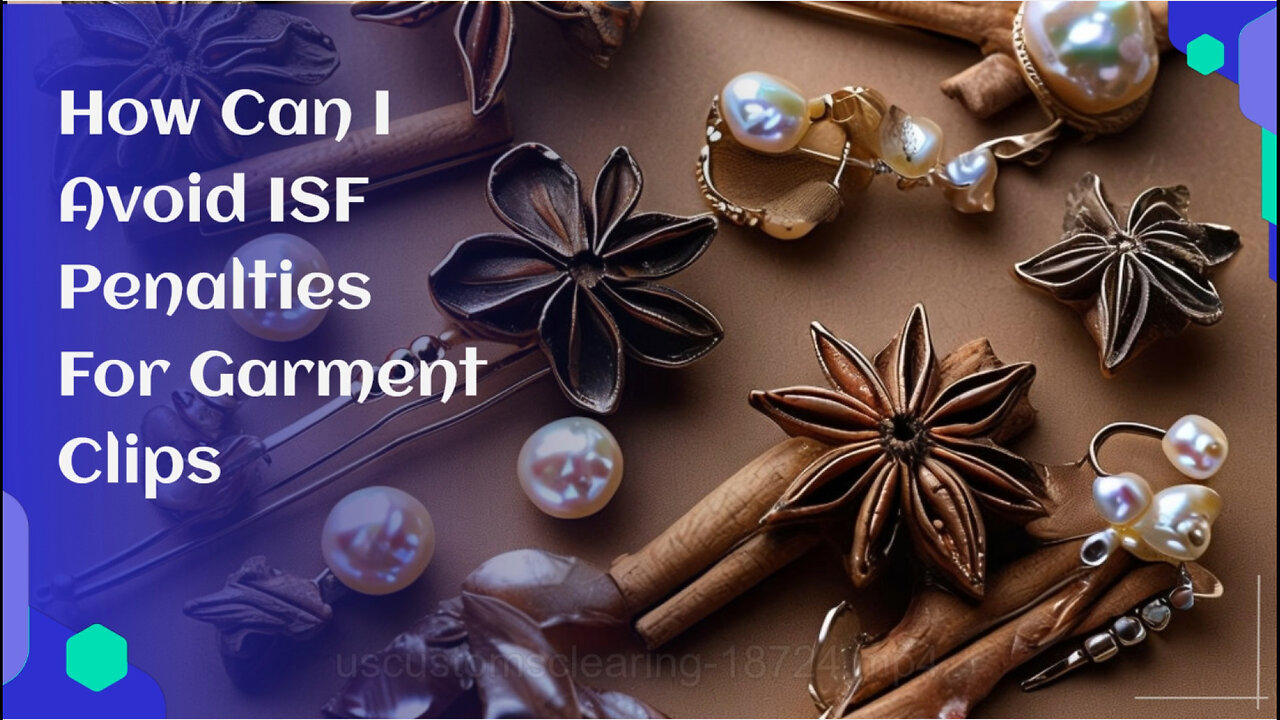Premium Only Content

Mastering ISF Compliance: The Key to Avoiding Penalties for Garment Clips
US Customs Clearing | 213-270-1930 | info@uscustomsclearing.com | https://uscustomsclearing.com/
This response provides a deep dive into the concept of Importer Security Filing (ISF) requirements and how to avoid penalties specifically related to garment clips in the textile industry. The Importer Security Filing, also known as the 10+2 rule, mandates importers to submit certain information to US Customs and Border Protection (CBP) before the cargo is loaded onto a vessel headed to the United States. To avoid penalties, importers should focus on submitting their ISF on time, providing accurate and complete information, correctly classifying the garment clips, maintaining proper documentation, and working with licensed customs brokers. Staying updated with any changes or updates to ISF requirements is also crucial. By following these steps, importers can ensure compliance, avoid delays, and navigate the complexities of customs regulations effectively.
#usimportbond #isfcustomsbroker #uscustomsclearing #isfentry
Video Disclaimer Here: For learning purposes only, We claim no affiliation with any US government agency.
00:34 - Timely ISF Submission: Ensure your Importer Security Filing (ISF) is submitted at least 24 hours before cargo loading to avoid monetary fines and delays.
01:23 - Accuracy of Information: Provide complete and accurate details about garment clips, including manufacturer, country of origin, and value, to prevent discrepancies and potential penalties.
01:43 - Correct Classification: Use the appropriate Harmonized System (HS) code for garment clips and consult a customs broker to avoid misclassification issues.
02:05 - Proper Documentation & Expert Assistance: Maintain all relevant documentation and consider working with a licensed customs broker to navigate customs regulations and ensure compliance with ISF requirements.
-
 LIVE
LIVE
I_Came_With_Fire_Podcast
12 hours ago🔥USAID SCANDAL | MA-GAZA | Cartel VIOLENCE Ramps Up🔥
1,280 watching -
 LIVE
LIVE
SpartakusLIVE
6 hours agoShadow BANNED, but we PARTY ON || Friday Night HYPE
596 watching -
 2:00:53
2:00:53
Omar Elattar
5 hours agoGRANT CARDONE: “Will I Run for Governor?” | Trump EXPOSED | Bitcoin | $500 Billion Crisis!
31.3K8 -
 46:48
46:48
Glenn Greenwald
8 hours agoGlenn Takes Your Questions On Gaza, USAID, and More | SYSTEM UPDATE #403
69.6K43 -
 56:42
56:42
Candace Show Podcast
11 hours agoBecoming Brigitte: One Coincidence Too Many | Ep 3
151K167 -
 3:14:38
3:14:38
Nerdrotic
12 hours ago $15.39 earnedDisney Plus's Complete FAILURE! Fantastic Four Trailer, MCU Phase 5 Reveal | Friday Night Tights 340
140K44 -
 1:00:58
1:00:58
The StoneZONE with Roger Stone
7 hours agoWill RINOs Sink Robert F. Kennedy Jr.'s Confirmation? | The StoneZONE w/ Roger Stone
33.9K4 -
 1:15:19
1:15:19
Edge of Wonder
9 hours agoReal Biochip Implants & Havana Syndrome Exposed: Interview With Jesse Beltran
29.7K10 -
 1:00:12
1:00:12
Sarah Westall
8 hours ago10 Billion Trump Lawsuit against CBS 60 Minutes, Ukraine Bio-labs and more w/ John Mark Dougan
46.9K19 -
 57:07
57:07
LFA TV
1 day agoThe ‘Dictator’ Who Downsizes Government | TRUMPET DAILY 2.7.25 7pm
38.2K8